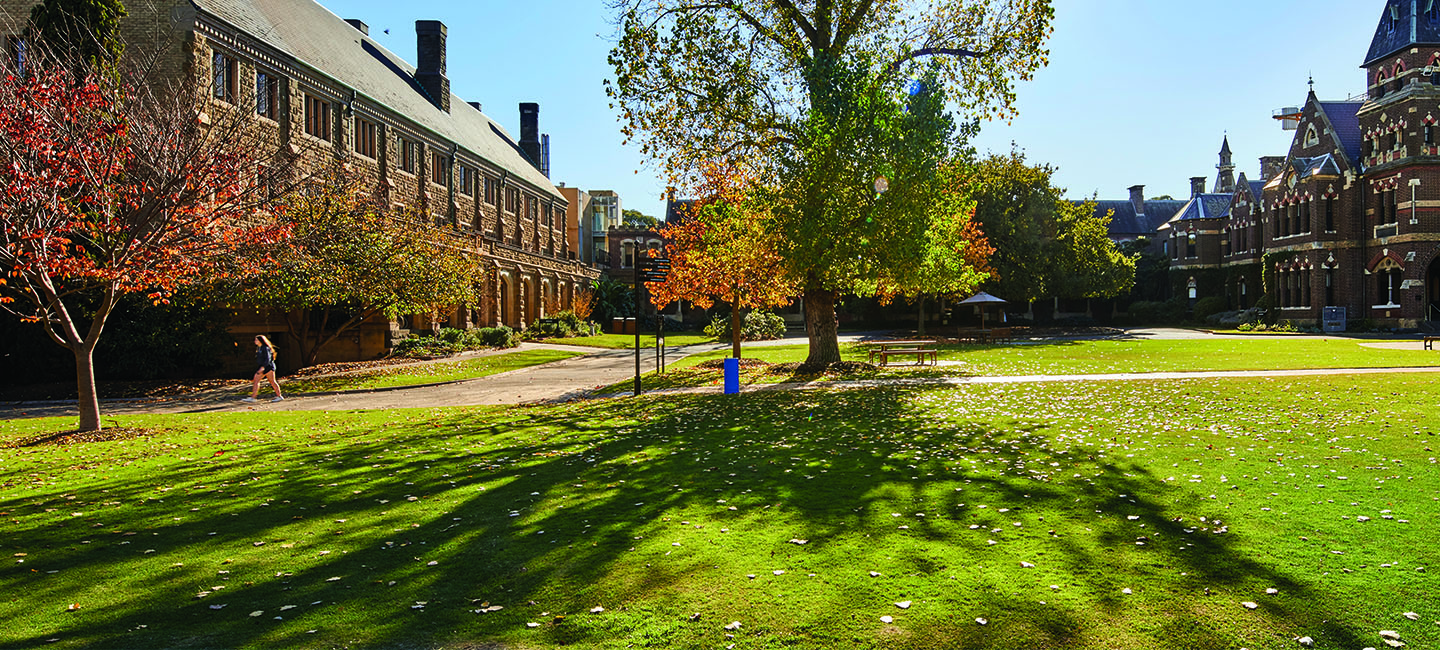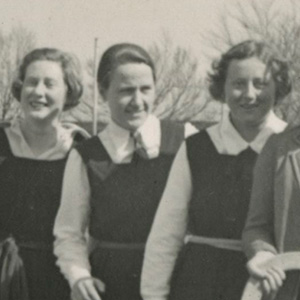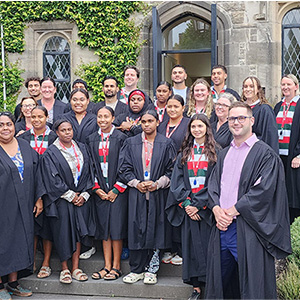

Past Trinity students burn their way to olympic history
Dr Peter Pockley (TC 1954) was one of 10 scientists and engineers, including Myles Fisher (TC 1956), Ian Jasper (TC 1953), Barry Johnson (TC 1945), Peter Read (TC 1954) and Ken Mason (TC 1952), asked by the 1956 Melbourne Olympic Committee to ‘tend to the precious symbol’ for the duration of the Games.
The Melbourne Olympic Games opening ceremony was just a whisker away from disaster. Earlier, the Olympic organisers had asked Trinity for 10 scientists and engineers to tend the precious symbol of the then, amateur sport. In return for long hours over 16 days and nights, they received free passes to the Melbourne Cricket Ground (MCG), a magnificent viewing platform all to themselves, and drab grey dustcoats with the Olympic rings stenciled on the pockets. The ink had barely dried on their final exam papers when they did a crash course in gas control at the Shell refinery at Corio near Geelong.
Ron Clarke, 18 years old and the world junior mile record holder, entered the MCG on November 22 1956, carrying not so much as an Olympic torch but a sputtering, magnesium-charged fireball. He lapped the stadium in a shower of sparks, mounted the steps and dipped his hand into a cauldron already geysering with gas. Clarke retreated sharply from the surging flames, his arm singed. At that moment he could have easily plunged from the podium built without barriers.
The Trinity team discovered on the day of the opening that the cone of the burner was too high for the runner to light so they scrounged an old butterbox for him to stand on. Also, the gas needed to be turned on earlier, to allow sufficient gas to gather in the cone to light the flame at the very moment the runner reached the cone.
Peter Pockley recalled the triumph of Clarke’s appearance in the stadium, and the near disaster which followed.
After our spotter called out that Clarke had started his climb up the steps to the cauldron, the valves were opened 10 seconds earlier than on rehearsal. But at the moment the gas was due to emerge, unlit from the burner, Clarke had not appeared. What to do? By the time he reached the podium our hearts were in our mouths: there was no way of stemming the flow of gas.
Before Clarke had reached even halfway across the cone with his torch, the gas had leaked visibly over the edge. It did not just ignite – it whooshed audibly upwards into a gigantic flame. The effect took Clarke by surprise and put him off balance as he hurriedly stepped back and off the butterbox, which tumbled over. Indeed, had he stumbled forward at this moment, he would have risked tripping over the edge of the podium! There was no safety rail or net and a frightening drop.
We breathed a sigh of relief when Clarke moved safely to the rear, but my hands still go clammy whenever I recall those moments!
-
News & Stories
- Anzac Day 2024 – Trinity stories
- Book now – Heathers: The Musical
- Guest preacher Chris Mulherin on the intersection of science and religion
- Meet Foundation Studies student Gabriella Sim
- Meet Foundation Studies student Hanadi Alabdouli
- Meet Foundation Studies student Miguel Valmayor
- Meet Gemma and Frederik Le Mesurier
- Meet Nakata Brophy prize winner Jasmin McGaughey
- Meet Paul Oslington, Trinity alum and Director of the St James’ Institute, Sydney
- Meet visiting professor the Hon Justice Joe Williams
- Pioneering women and the story of Janet Clarke Hall
- Visit David Frazer's new exhibition: All that you've loved
- What is Eid al-Fitr?
- Events
- Art
- Music & Choir
- Campus Development Projects
- Visiting Scholars & Lectureships
- Accommodation for Visitors
- Short Programs
- Work at Trinity

.jpg?width=300&height=300&ext=.jpg)

